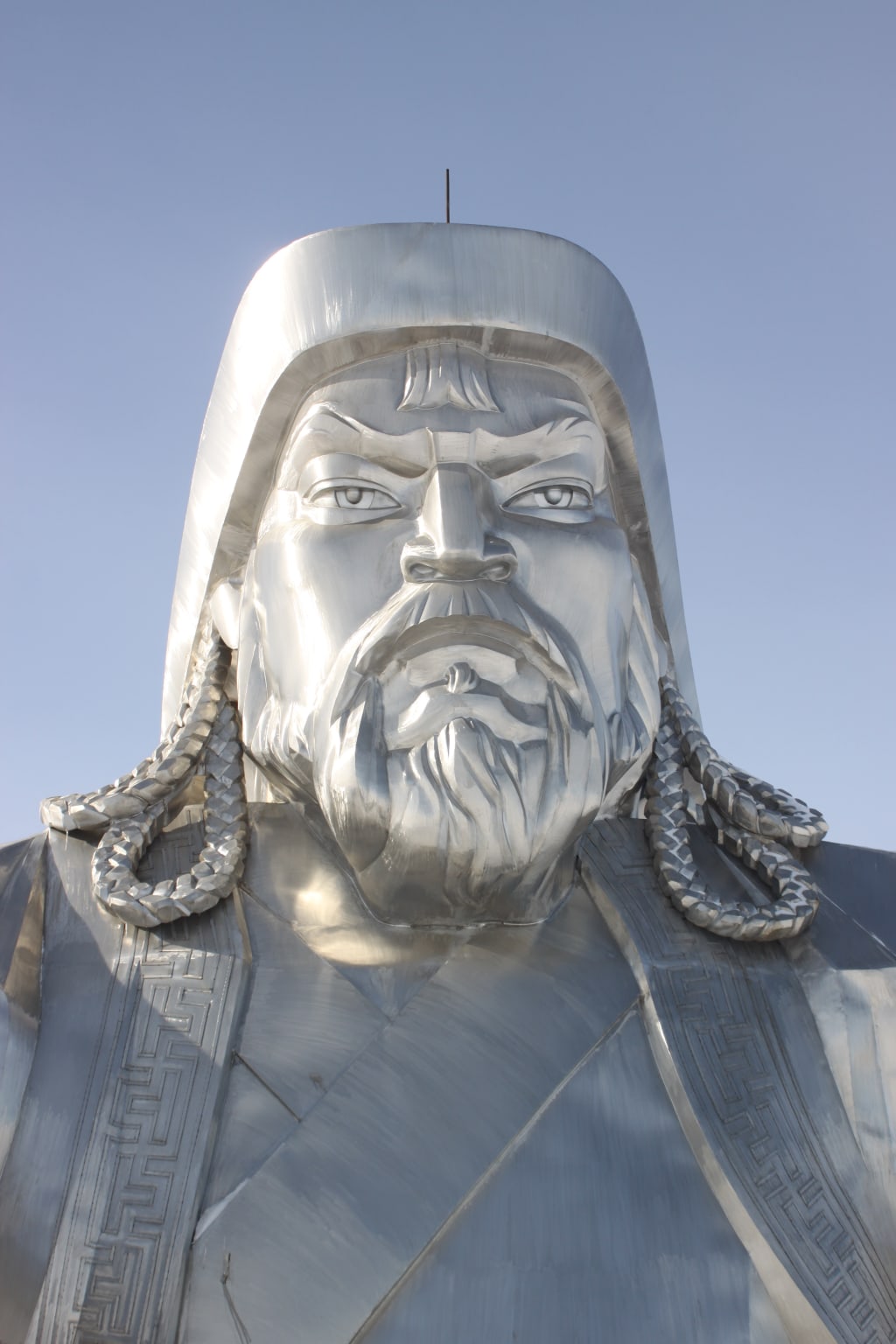Genghis Khan: The Rise and Fall of the Mongol Empire
A Tale of Triumph, Tragedy, and Cultural Advancement

Once upon a time, in the heart of the vast steppes of Central Asia, there lived a great warrior and leader named Genghis Khan. Born in the late 12th century in what is now Mongolia, he would go on to conquer much of the known world and build one of the greatest empires in human history.
Genghis Khan was born into a small tribe of nomads, who lived a simple and harsh existence on the steppes. As a child, he was known as Temujin and lived with his mother, father, and several siblings. However, his peaceful life was shattered when his father was murdered by a rival tribe.
Temujin was left to fend for himself and his family, and he quickly learned the art of survival in the harsh steppes. Over time, he built a loyal following and began to gather other tribes under his banner. He became a fierce and respected warrior, and his name soon spread throughout the region.
In 1206, Temujin was proclaimed the Great Khan of all the Mongol tribes, and he took the name Genghis Khan. He immediately set out to conquer neighboring lands, and his armies quickly proved to be unstoppable. The Mongol Empire grew rapidly, and by the time of Genghis Khan's death in 1227, it had become the largest empire in human history.
Under Genghis Khan's leadership, the Mongol Empire was known for its military prowess and brutality. However, it was also a time of great cultural and scientific advancement. Genghis Khan established a system of laws and governance that brought stability to the empire, and he encouraged trade and commerce throughout his realm.
One of the most remarkable aspects of Genghis Khan's reign was his tolerance of different religions and cultures. Although he was a devout follower of the Mongol's shamanistic traditions, he allowed his subjects to worship as they pleased, and he even sought the counsel of Christian and Muslim advisers.
Genghis Khan's conquests brought many changes to the regions he conquered. For instance, he brought the Silk Road under Mongol control, which facilitated trade and commerce between Europe and Asia. The Mongols also introduced new technologies, such as gunpowder and the printing press, to the regions they conquered.
Despite the advances that Genghis Khan brought to the Mongol Empire, his rule was also characterized by violence and bloodshed. His armies were known for their brutality, and they would often kill or enslave entire populations of conquered cities.
After Genghis Khan's death, the empire continued to expand under the leadership of his successors. They conquered much of China and Central Asia and even reached as far as Eastern Europe. The Mongol Empire was a cosmopolitan society, and its capital city, Karakorum, was a bustling metropolis that attracted traders and scholars from all over the world.
However, the Mongol Empire was not invincible, and it eventually fell apart due to internal conflicts and external pressures. By the mid-14th century, the empire had fragmented into smaller states, and Mongolia itself became a series of warring tribes.
Despite its eventual decline, the legacy of the Mongol Empire lived on. It had opened up new trade routes between Europe and Asia, and it had introduced new ideas and technologies to the world. The Mongol Empire had left a lasting mark on human history and had helped to shape the world we live in today.
In modern Mongolia, Genghis Khan is still revered as a national hero, and his legacy continues to inspire and motivate the Mongolian people. His story is a testament to the power of determination, leadership, and the human spirit. The story of Genghis Khan and the Mongol Empire is a fascinating tale of triumph and tragedy.
About the Creator
Enjoyed the story? Support the Creator.
Subscribe for free to receive all their stories in your feed. You could also pledge your support or give them a one-off tip, letting them know you appreciate their work.






Comments
There are no comments for this story
Be the first to respond and start the conversation.